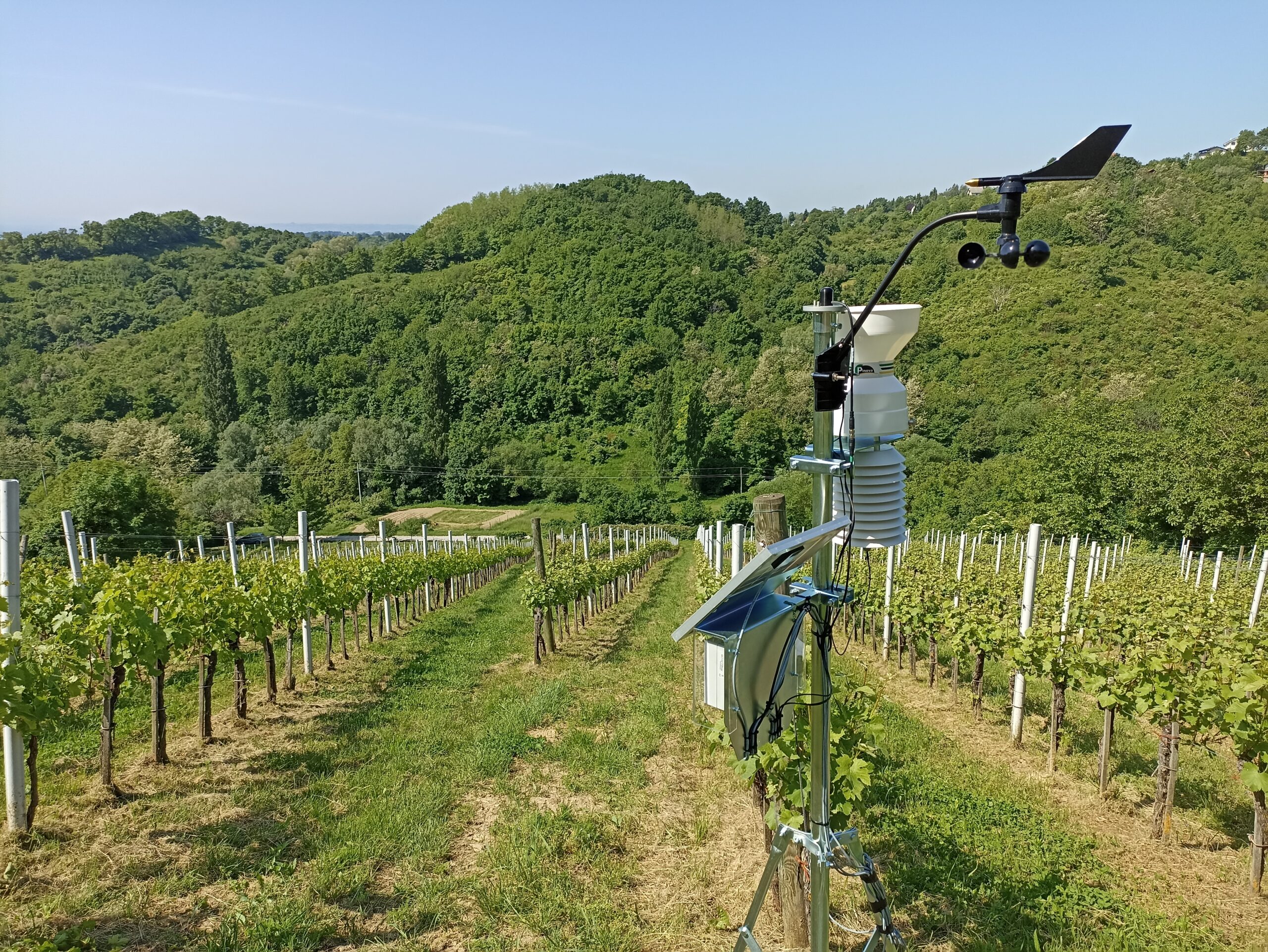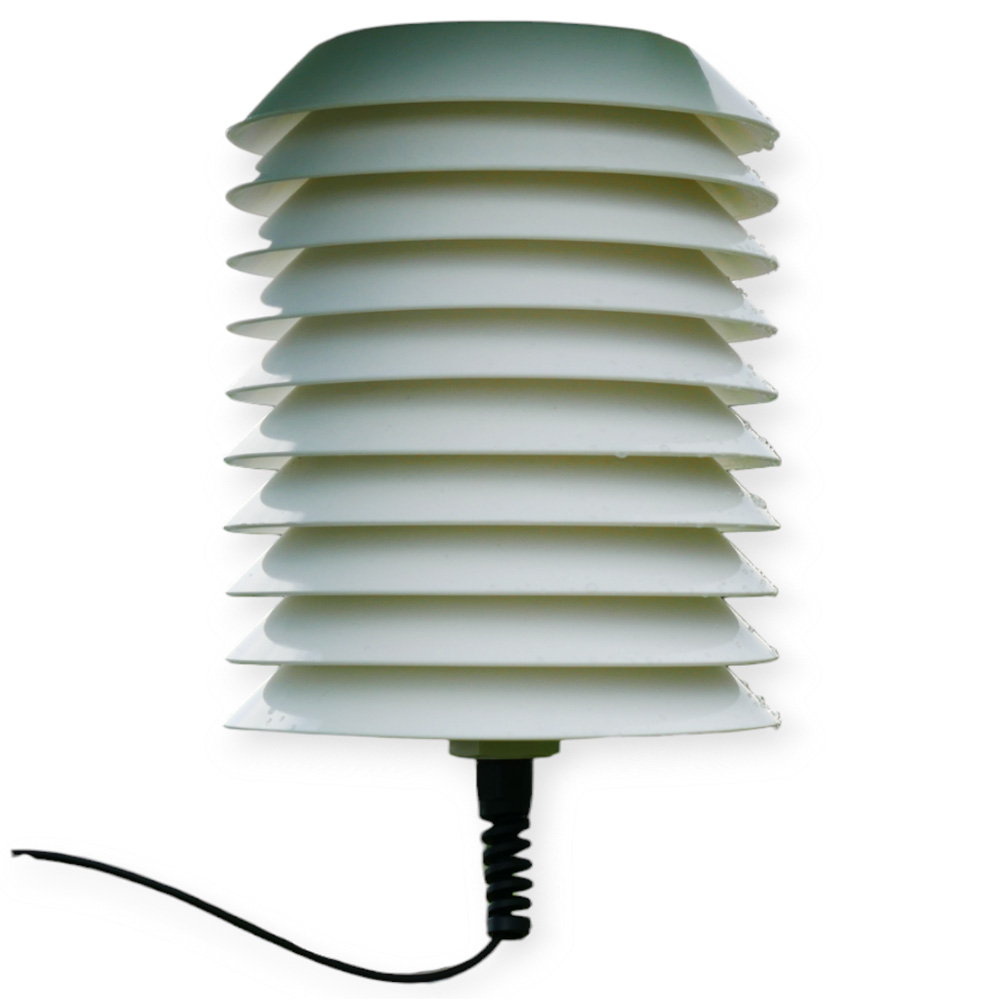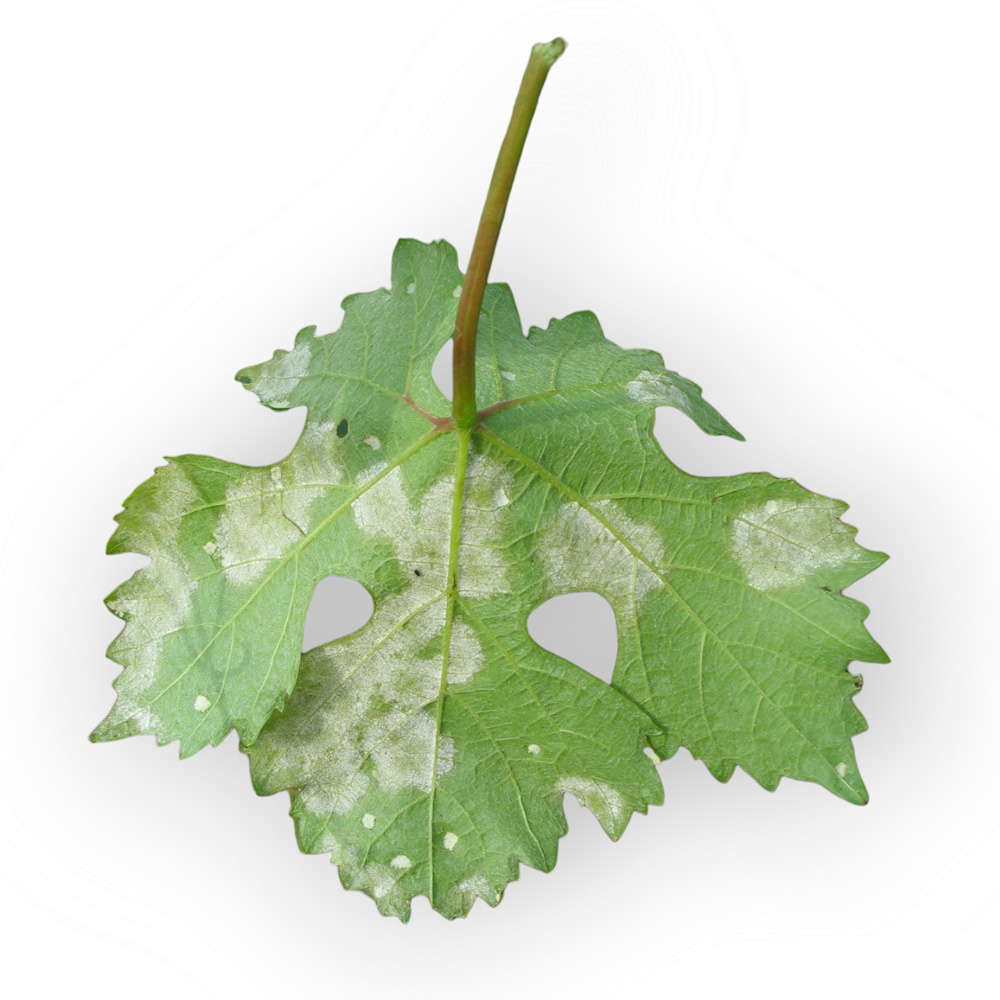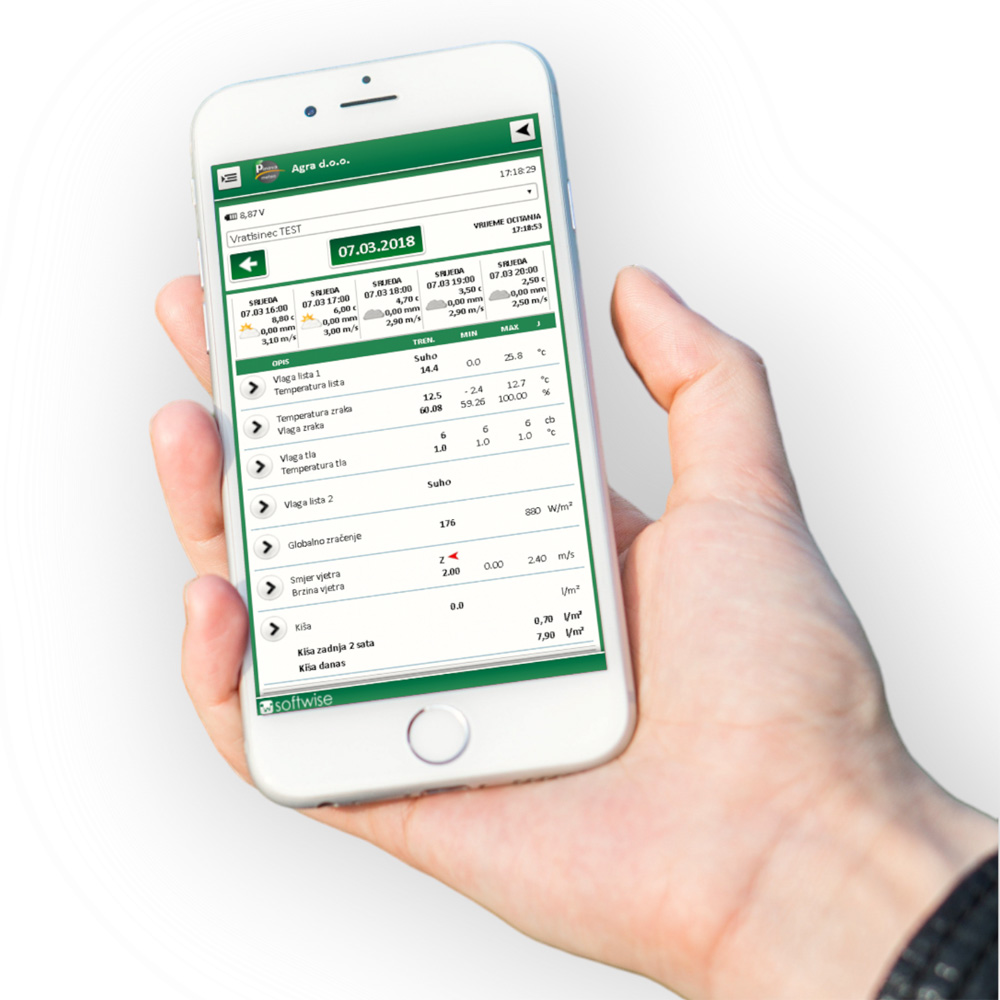Category
Pinova Meteo
Agriculture weather station
Pinova Meteo is a reliable and robust weather station designed for agricultural production. The station automatically measures, stores, and transmits data. Users can access the data via computer and mobile devices.

Basic Model Includes:
- Air temperature and humidity sensor (RHT35)
- Rain gauge (RG300)
- Leaf moisture sensor (PLWS)
- Software for desktop – PinovaSoft
- Mobile software – PinovaMobile
- Mounting stand
- Solar panel
- Batteries
Additional Options:
- Plant disease models and SIM card require an annual license.
- The basic model includes all necessary parameters for calculating plant disease models.
- API system for data retrieval available.
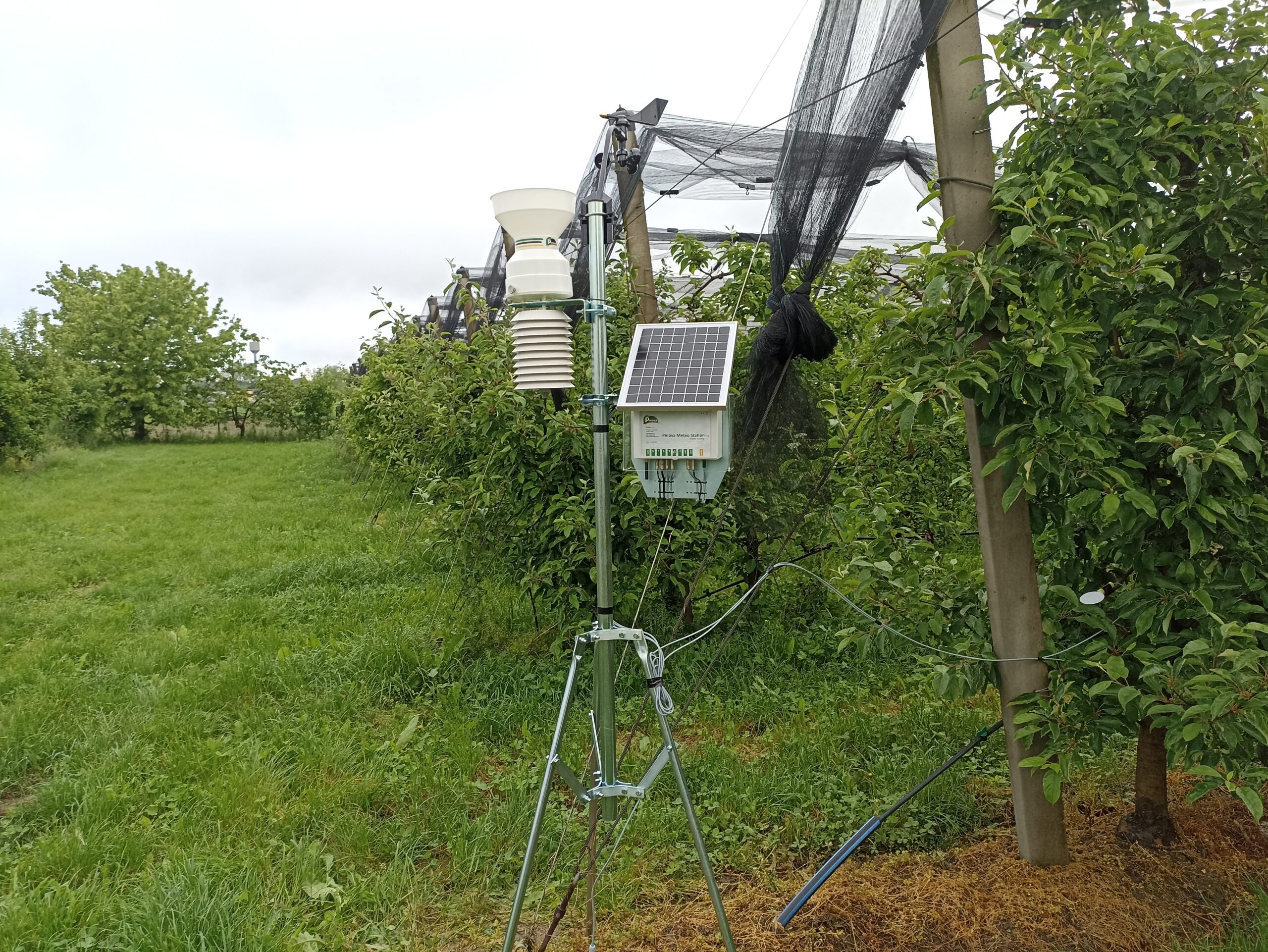
Customizable Parameters
The Pinova Meteo weather station can be fully customized by the user to select which parameters they wish to measure. Available options include:
- Air temperature (°C)
- Relative humidity (%)
- Rainfall (mm/m²)
- Leaf moisture (%)
- Plant zone temperature (°C)
- Soil temperature (°C)
- Wind speed (m/s)
- Wind direction (0-360°)
- Global radiation (W/m²)
- Photosynthetic activities (mol m-2s-1)
- Soil moisture (%)
- Soil moisture (cb)
- Air pressure (hPA)
- Dew point (calculated) (°C)
- Evapotranspiration (calculated) (mm/m²)
Maximum number of sensors per station: 8
⚙️ How It Works
Pinova Meteo is fully automated, meaning users don’t need to physically collect data from the station. During the day, the station is powered by solar energy, while at night it operates on batteries that are charged during daylight hours. The station collects data every 10 minutes and transmits it every 30 or 60 minutes (this frequency can be adjusted based on user needs) via GPRS (m2m SIM card). Data is sent to servers, and the PinovaSoft app automatically retrieves, processes, and displays it in a clear and user-friendly format.
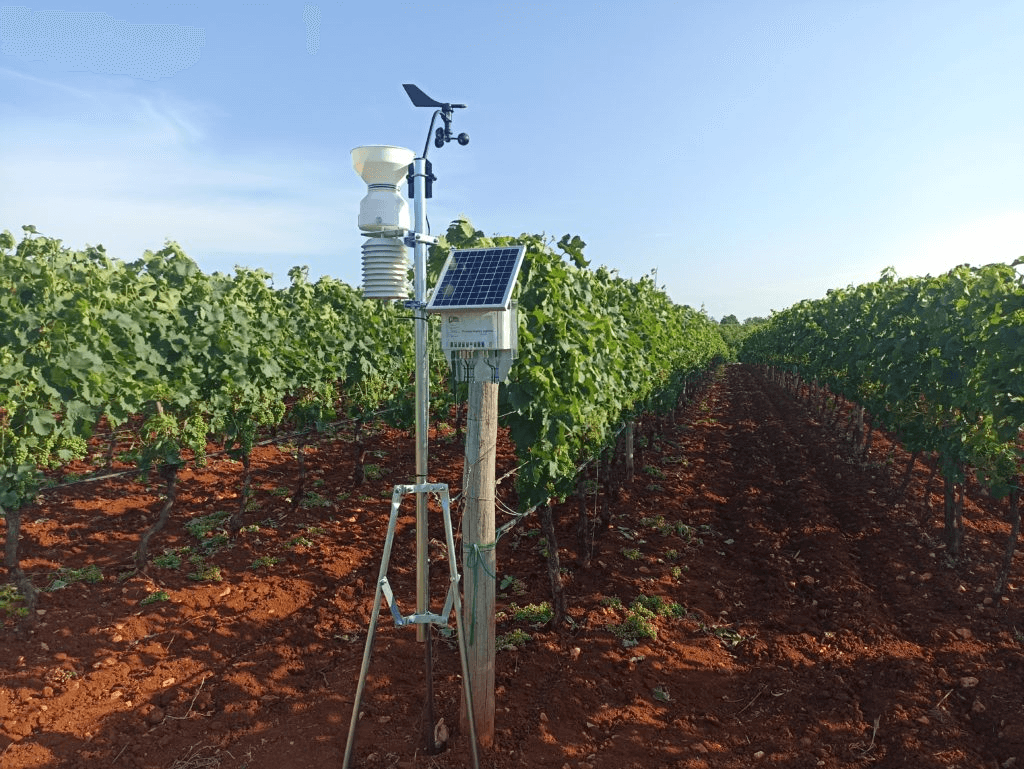
Why Choose Pinova Meteo?
Agricultural production is heavily influenced by weather conditions. Accurate data on rainfall, temperature, wind, and humidity can help answer many critical questions:
- Is the temperature and humidity suitable for crop protection?
- What was the minimum temperature last night?
- Is there a frost risk?
- When was the last rainfall and how much rain fell?
- Can machinery be used in the field after the rain?
- Is the soil frozen, and to what depth?
- Is the wind too strong for spraying?
- How long has the leaf been wet, and is there a risk of infection in the orchard or field?
- Do I need to irrigate, and how much water should I use?
These answers significantly affect planning and execution of agronomic operations. Making the right decisions saves on resources, time, and energy, leading to financial savings and reduced environmental impact.
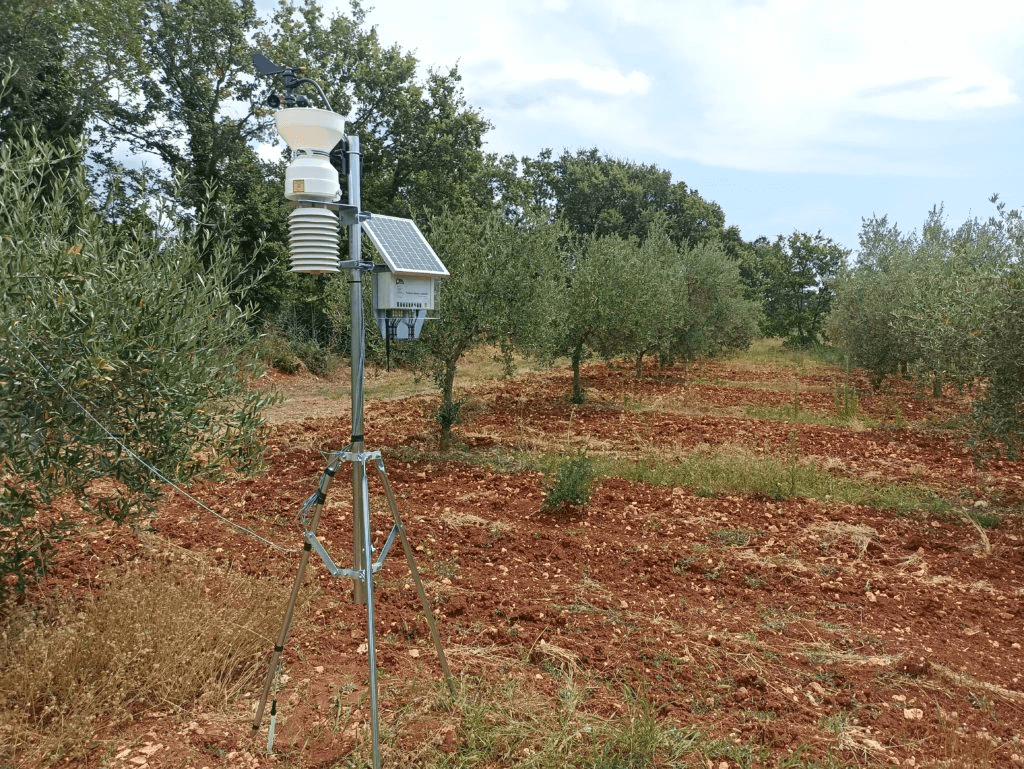
Who Uses Pinova Meteo?
Pinova Meteo stations are used by:
- Orchardists, vineyard owners, vegetable growers, nursery owners, and farmers, regardless of whether they practice organic, integrated, or conventional production.
- Agricultural faculties and institutes rely on microclimate data for their field research and educational purposes.
- Agrochemical producers need microclimate data to test their products and advise clients on their application.
- Private and state advisory services use the data to publish warnings and advise their users on agronomic practices.
TECHNICAL CHARACTERISTICS
| Data transfer | GPRS |
| Power supply | Solar panel + 6 x 1,2V battery |
| Max nuber sensors per station | 8 |
| Mounting options | Tripod or pole |
| Operation range | -30 to +60 |
| Disease models | Yes |
| Measure interval | 10 minutes (default, can be changed) |
| Logging interval | 1 hour (default, can be changed) |
| Total weight | 15 kg |
